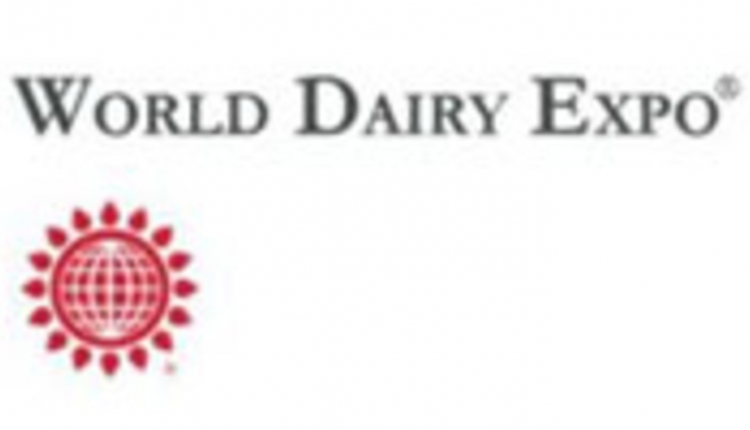The information below has been supplied by dairy marketers and other industry organizations. It has not been edited, verified or endorsed by Hoard’s Dairyman.
Executive Summary
- FBN® polled members in the second half of December into early January, asking how many acres of winter wheat were planted in the fall of 2022 and the fall of 2021.
- Responses totaled 325 across winter wheat producing states with results pointing to a boost in planted area, year over year.
- Planted area increases are estimated for SRW and HRW with all US winter wheat planted area seen up 900,000 acres at 34.2 million for 2023/24 versus plantings for 2022/23.
- USDA is set to release its January Winter Wheat and Canola Seedings report on January 12. Last year, USDA’s initial estimate for US winter wheat planted area came in at 34.4 million acres; revisions followed with the actual estimate dropping to 33.3 million acres per the Small Grains Annual Summary.
Survey Data Point to Highest Winter Wheat Area in Years
Our team surveyed FBN members starting in late December about winter wheat planted areas. We asked what was planted in 2022 for harvest in 2023 and what was planted the year before. A total of 325 responses were received. We also asked members what percentage of each class of winter wheat was planted. At the national level, these are FBN’s estimates of US winter wheat planted area for the 2023 harvest.
US Winter Wheat Plantings for 2023 Harvest (Million Acres)


Planted Area Estimate Falls Shy of Price-Model Indicators
Winter wheat futures have been volatile for the 2022 calendar year, with a lot of that tied to the situation in the Black Sea. The price signals to producers have been to increase planted area, which is what our survey results showed. Looking at Kansas City futures specifically, the projected price - used in insurance policies - averaged at its highest level in nearly a decade. And when looking at new-crop futures and their relationship with planted area, prices indicated that planted acres would be close to the 35.2 million acre mark, which aligns directionally with our bias, but points to more area than what producers indicated per our survey results.

Conditions Ahead of the Dormant Season
Crop conditions heading into the dormant season left much to be desired. The prolonged drought in the US Southern Plains weighed on conditions in the fall. The latest reading was an improvement, but as the chart shows, conditions for the crop overall were low versus recent history. The good news is that despite these poor ratings heading in the dormant season, there is no clear conclusion that yields will be negatively impacted. For more details, please read this report published in November. Our research suggests that the condition ratings in the fall do not paint a picture of a crop failure in the spring. Spring weather will be key in determining yields.

Double Cropping Intentions
In the survey, we asked producers how many acres would be double cropped this year and how many were last year (soybeans following winter wheat). The survey pointed to no significant change to double cropped percentages in 2023 versus 2022. Double cropped acres have dropped significantly versus the highs hit with a lot of that tied to fewer acres of wheat being planted. In 2013, SRW planted area topped just over 10 million acres whereas in 2022, acres were 6.6 million. But with SRW wheat acres set to be up, double cropped acres could be up marginally as well too.

Recommendations
Ahead of this report, our recommendations to producers were to be collectively 30% sold on winter wheat. We issued recommendations on February 23, 2022, August 31, 2022, and September 29, 2022 for HRW and SRW. Each recommendation was to sell 10%. The average price we are sold at now is $9.08 for HRW (off Kansas City July 2023 futures) and $8.71 for SRW (off Chicago July 2023 futures).
Based on this acreage report, we are not in a rush to push more on coverage. However, we do encourage producers to get to our recommended level of percent sold. Given that price models indicated a higher plated area total, we could be underestimating planted area. Also, USDA’s initial acreage estimate in 2022 was notably larger than the final, and if that pattern were repeated again this year, new-crop futures could be impacted negatively.
FBN Market Advisory services are offered by FBN BR LLC, dba FBN Brokerage, FBN BR and FBN Market Advisory - NFA ID: 0508695
Disclaimer: The views and opinions are solely those of the author as of the date of publication, are subject to change at any time due to market or economic conditions, will not be updated or supplemented after the date hereof and may not necessarily come to pass. The views and opinions expressed herein do not reflect those of all personnel at FBN BR LLC (FBN) or the views of the Farmer's Business Network Inc. as a whole.
Commodity trading, including futures, hedging and speculating, involves substantial risk of loss and may not be suitable for all investors. All information, publications, and reports, including this specific material, used and distributed by FBN BR LLC shall be construed as a solicitation. The information and data provided comes from sources believed to be reliable but FBN BR LLC does not guarantee its accuracy or completeness. Past performance is not necessarily indicative of future results. FBN makes no representations, warranties, or guarantees as to this content.
Copyright © 2014-2023 Farmer's Business Network, Inc. All rights Reserved. "Farmers Business Network," "FBN," and "Farmers First" are registered trademarks of Farmer's Business Network, Inc. All other trademarks are the property of their respective owners.








